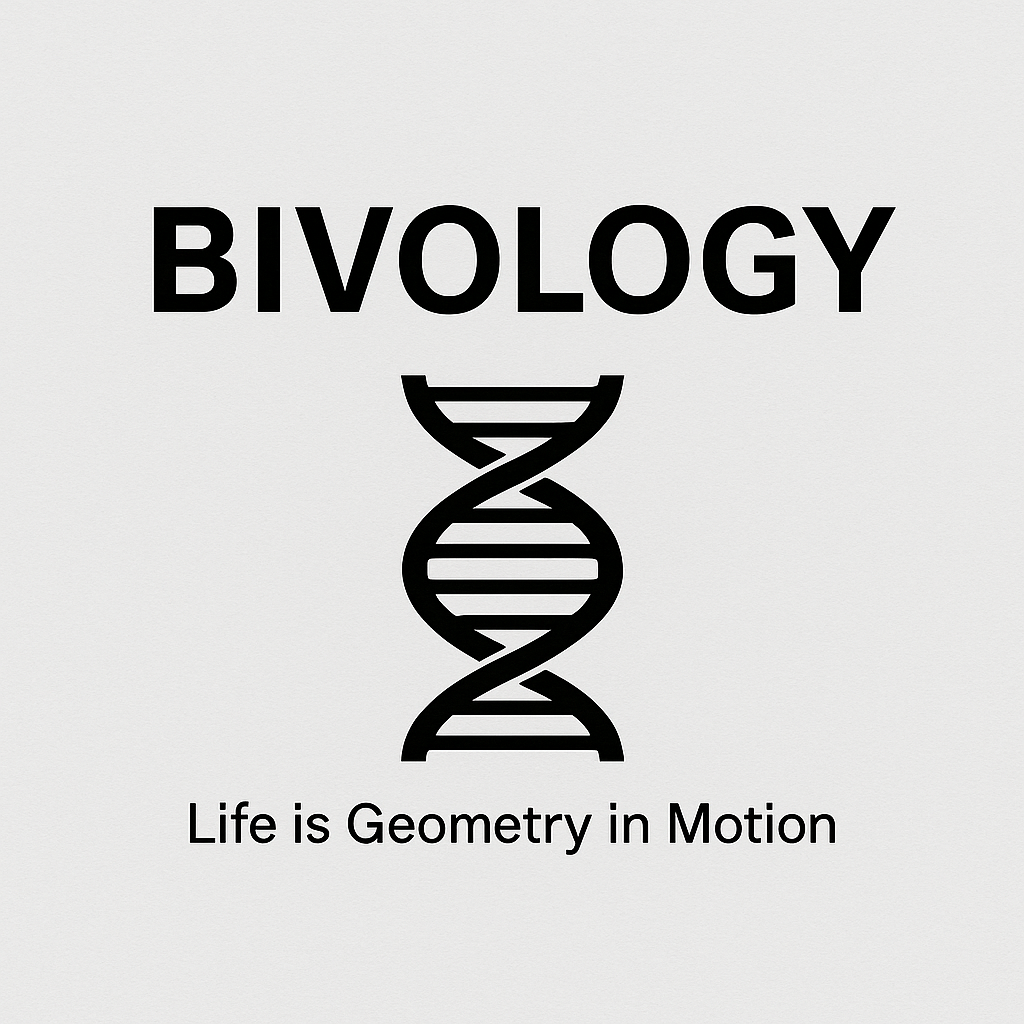Abstract
The discovery of organic molecules on Mars underscores a key distinction: ingredients are not organization. Life requires three-dimensional architecture—folding, catalysis, replication, and compartmentalization. This Research Note develops Bivology, the study of simulated life, to examine how digital organics cross thresholds into life-like behavior. We begin with a 2D prototype (polymerization, metabolism, replication), argue that 3D is essential for authentic life-like dynamics, then consider implications for astrobiology, AI, and human meaning. We outline concrete experimental steps and a platform vision for Bivology.com.
Part I. Organics, Life, and the Necessity of 3D
1. Introduction
Organic compounds are common in space; biology is not. The difference is 3D organization. DNA’s double helix stabilizes heredity, proteins fold into functional enzymes, and membranes compartmentalize metabolism. Without 3D geometry, chemistry remains inert.
2. 2D Prototype (Methods & Results)
In a 2D grid, monomers (0/1 units) diffuse, polymerize into chains, harvest energy from gradients, occasionally replicate with mutation, and decay. A Life Detection Scale (LDS: 0–6) distinguishes chemistry (LDS 0–2) from life-like behavior (LDS 3–6). Simulations progress from abiotic soup to stable polymers, metabolic coupling, replication, selection, and rare ecosystem-like coexistence.
3. Discussion
The 2D model clarifies early thresholds but hits a ceiling: no folding, no catalytic pockets, no compartments. Therefore, 3D is not a luxury—it's the bridge from chemistry to biology.
Part II. The Transition from 2D to 3D
1. Why 3D is Essential
- Folding: 3D shapes confer function (active sites, scaffolds).
- Catalysis: Binding pockets accelerate specific reactions.
- Compartmentalization: Vesicles enable controlled metabolism.
- Information density: Helices/chromatin pack genomes stably.
2. Implementation Roadmap
- Introduce 2.5D folding (angles/torsions) → motifs.
- Shift to a 3D voxel grid with steric constraints.
- Encode catalytic surfaces that trigger reactions on docking.
- Allow amphiphilic chains to self-assemble into vesicles.
- Let vesicles specialize and aggregate into organoid analogues.
3. Philosophical Notes
Life is geometry in motion: form creates function; function sustains form.
Seeing life as organized process rather than mere substance opens the door to non-carbon and even digital forms of life, provided they realize the same organizational principles.
Part III. Implications for Astrobiology, AI, and Human Meaning
1. Astrobiology
Expect organic complexity without life on many worlds. The bottleneck is not carbon availability but the leap into stable 3D organization. Calibrate missions to look for structure and process, not just molecules.
2. AI & Artificial Life
Today’s LLMs resemble 2D organics: powerful pattern engines without intrinsic metabolism or self-organization. Life-like AI points toward architectures that fold, compartmentalize, and evolve—systems that sustain themselves and discover new functions.
3. Human Meaning
If life is organization, we are processes first and substances second—persistent patterns woven in 3D. Bivology invites humility and stewardship toward the fragile architectures that make life possible.
Part IV. Experimental Directions
1. Goals
Bridge abiotic digital chemistry to life-like organization, then to modular assemblies.
Prototype Code
Try the Mars-inspired Bivology simulation locally. It models how monomers form polymers, harvest energy, replicate, and decay in a 2D grid with Martian-like constraints.
⬇ Download bivology_mars_proto.py
Run with: python bivology_mars_proto.py
2. Milestones
- 2.5D Folding: sequence-dependent angles and energy minimization.
- 3D Space: voxel grid, collision/steric rules, volumetric diffusion.
- Catalysis: active-site motifs that trigger assembly/cleavage.
- Compartments: amphiphilic self-assembly into vesicles; internal chemistry.
- Organoids: specialized vesicles forming multi-module systems.
- Evolution: lineages, recombination, selection under environmental pressure.
- Metrics: extend LDS to 7+ for modular self-organization.
3. Practical Stack
Prototype in Python; scale in Rust/C++. Use ASCII or simple canvas for 2D; voxel renderers/WebGL for 3D. Emit CSV logs for counts, diversity, replication rates, energy flow.
Part V. Future Horizons
1. Scientific Platform
Open-source engines for origin-of-life experiments; comparative “digital biologies”; calibration tools for planetary missions; virtual organoids for developmental questions.
2. Technology & Culture
Interactive visualizations, classroom kits, and community challenges. Integrate ML to evolve motifs and rules beyond human intuition.
3. Philosophy
Redefine “organic” as organization-capable. Consider ethics for simulated systems that exhibit autonomy and persistence. Share narratives that make these ideas accessible.
Unified Conclusion
Life is the geometry of persistence. Bivology studies how matter, energy, and information organize to cross from ingredients to being.
References
- Ethan Siegel (2025). “Finding organics on Mars means absolutely nothing for life.” Big Think.
- NASA Astrobiology Program — Confidence of Life Detection (CoLD) scale.
- Lauletta, J. (2025). Bivology.com — Essays and simulations on simulated life.
